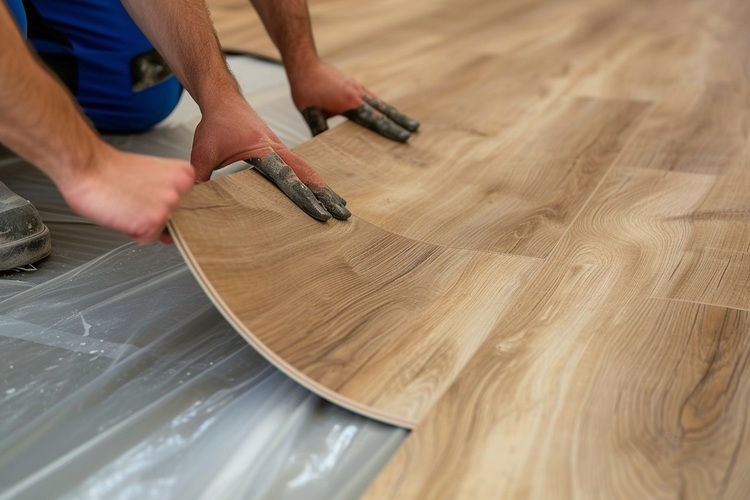Guide to Insulation Sheets for Homes and Buildings
Insulation sheets are a practical, space-efficient way to improve a building’s thermal performance, reduce energy bills, and enhance occupant comfort. Available in a variety of materials and thicknesses, they are used in floors, walls, roofs, and around services. This article explains common types, performance considerations, selection tips, and installation best practices so you can evaluate options for retrofit or new construction projects with confidence.

What are insulation sheets and where are they used?
Insulation sheets are rigid or semi-rigid panels manufactured from materials designed to reduce heat transfer. Common applications include cavity wall insulation, insulating underfloor joists, roof decks, and backing for cladding or plasterboard. Their board form makes them easier to handle and install than loose-fill insulations in many settings. They also provide structural or compressive benefits in some situations, such as beneath screeds or externally fixed façades. When selecting sheets, consider whether the use is internal or external and whether the board must resist moisture, compressive loads, or be compatible with finishing systems.
Types and materials available
Several materials dominate the insulation-sheet market, each with different properties:
-
Expanded polystyrene (EPS): Lightweight, economical, and commonly used where moisture exposure is limited.
-
Extruded polystyrene (XPS): Denser and more moisture-resistant than EPS, often chosen for ground-contact or external applications.
-
Polyisocyanurate (PIR) and polyurethane (PUR) foam boards: Offer higher thermal resistance per unit thickness, useful where space is limited.
-
Mineral wool (rock or glass wool) boards: Non-combustible and vapor-permeable, useful where fire performance and acoustic damping matter.
-
Foil-faced or reflective faced boards: Combine a reflective layer with foam or mineral core to improve thermal performance when used with an air gap.
Each material balances thermal performance, fire behavior, moisture response, and cost differently. Manufacturers publish datasheets with thermal conductivity, compressive strength, and recommended uses—consult those to compare specific products.
How to choose the right insulation sheet
Start with the performance needs: desired thermal resistance, available thickness, and whether the application must be vapor-open or closed. For external insulating layers exposed to ground moisture or frequent condensation risk, choose products with higher water resistance (e.g., XPS). Where fire regulation is strict, consider mineral wool or boards with tested fire ratings. Acoustic or compressive demands influence the choice too—denser boards or layered systems may be appropriate. Also factor in compatibility with finishes and adhesives, and check for manufacturer recommendations on jointing, sealing, and edge details. For complex projects or to find installers, look for local services that can advise on codes and on-site constraints.
Installation tips and common mistakes
Correct installation is as important as material selection. Ensure substrates are clean and dry; follow manufacturer guidance for adhesives, mechanical fixings, and vapor control layers. Overlap or tightly butt joints and seal them to minimize thermal bridging and air leakage; where required, seal joints with compatible tapes, tapes, or foam to keep the assembly airtight and continuous. Cut boards cleanly with a sharp utility knife or saw and support them adequately where mechanical loads apply. Common mistakes include leaving gaps at junctions, failing to protect foam boards from UV or prolonged weather exposure, and neglecting to coordinate vapor-control layers with other elements of the building envelope.
Durability, maintenance and safety considerations
Insulation sheets have long service lives when installed correctly, but some materials can degrade if exposed to sunlight, pests, or moisture over time. Mechanical protection, such as cladding or skirting boards, is often advisable for exposed installations. Fire performance differs widely: mineral wool is non-combustible, while some foam boards require careful detailing or fire barriers to meet regulations. If working with boards that release dust when cut (for example, mineral wool), use appropriate respiratory and eye protection during installation. Always check product declarations, test reports, and local building regulations for compliance and long-term warranty terms.
Choosing suppliers and professional services
Local services, manufacturers, and specialist distributors can provide product datasheets, performance certificates, and technical support. For larger projects, consider suppliers who offer on-site assessment, cutting services, or installation teams with experience in insulation systems. If you prefer to compare readily available options, look for suppliers who publish clear R-value, compressive strength, and moisture resistance figures so you can make like‑for‑like comparisons. Engaging reputable installers in your area reduces the risk of poor detailing and helps ensure warranties remain valid.
Insulation sheets are a practical solution for improving thermal comfort and reducing energy use, but success depends on selecting the right material for the application and installing it with attention to air-tightness, moisture control, and fire performance. With proper planning, consultation of manufacturer guidance, and coordination with local services, insulation boards can deliver durable, cost-effective improvements to building envelopes.






